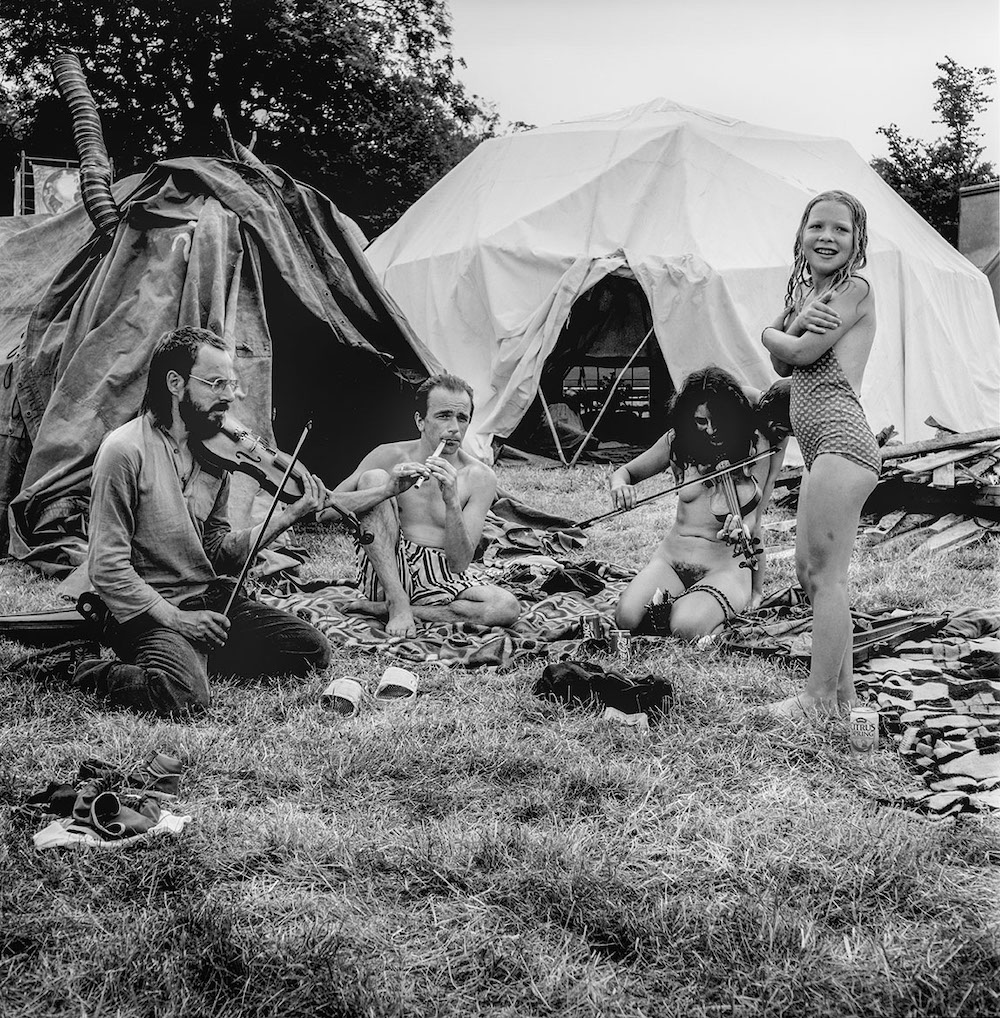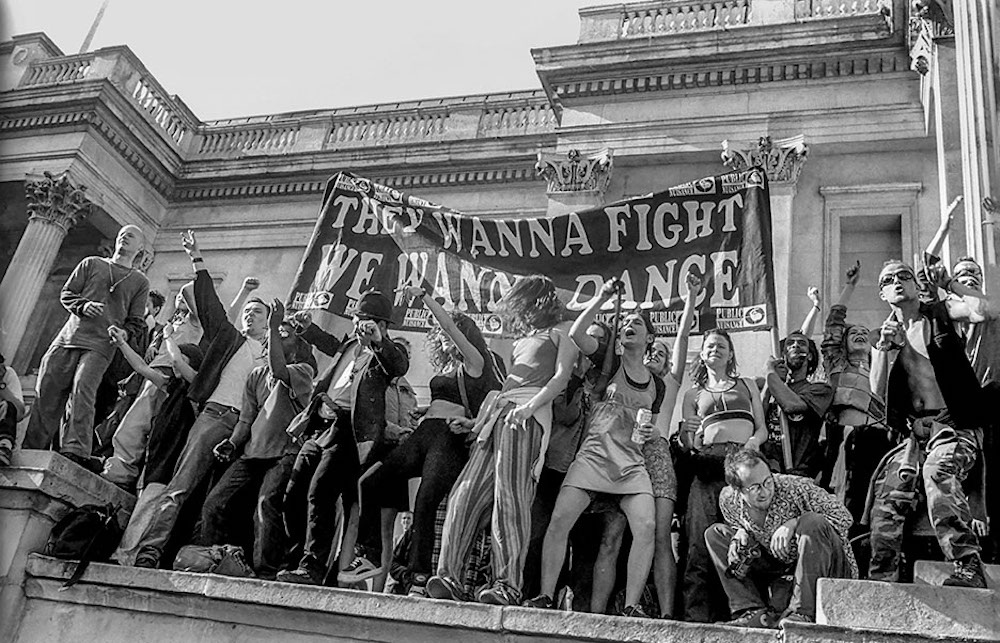Exist To Resist is a book of Matthew Smith‘s photographs that captures the free party scene and celebrates the lost freedom of rave, festival and protest culture in 1990s Britain. Originally self-published in 2017, Matt is currently crowdfunding a second expanded edition via another Kickstarter campaign. Emily Thomas spoke to Smith about the updated edition of Exist to Resist and how 90s rave resistance can be weaponised for public activism now.
For our readers who don’t know, could you explain what Exist To Resist is about?
Exist To Resist is a collection of powerful, lyrical images made from a love of sound system culture. The book is a chronological history of before, during and after the outlawing of rave culture in the ‘90s and our opposition to that process. It is a diary of celebration and resistance.
What time period does the book cover?
The book begins when I first met the culture properly at Glastonbury Festival in 1989. It was the first year that rave entirely unofficially hit Glasto in a big way. It ends at the big Reclaim The Streets protest in Trafalgar Square on Mayday ‘97 with the mighty Immersion sound system blasting out acid techno to a massive crowd of people just a matter of maybe half a mile from Downing Street.
The title is simple, concise and gets straight to the point. What inspired it?
It was a placard in one of my images from Reclaim The Streets. Resist To Exist. I had it blown up big on my screen as I was editing it for the book. I stopped and looked at the words and thought I should reverse that. Exist To Resist.
It also expresses just what our lives were like back then. In the run-up to 1994, we did everything we could to protect this culture in the face of the legislation. Plus, the cultures targeted for persecution literally lived their opposition every day just by the virtue of their lifestyle choices.
How did you start photographing raves and when did it become such an important part of your life?
I grew up in Somerset, went to loads of parties in fields and then I went to college in Stoke-on-Trent from 1987-1990. I went to the Hacienda and various northern acid house nights in Liverpool, Manchester and Stoke. I lived in London after that. Plus, lots of Somerset. Around ’92-’93 a lot of us moved to Bristol and formed Sunnyside so we could work together and create opposition to the Criminal Justice Act.
In ‘95 I moved out after the Criminal Justice Act demos, our massive parties in Feeder Road and the Mother Festival. We got news that our landlines were being bugged in our house in Clifton and that was that. I moved back to a trailer in the garden of a village house in Somerset and did parties with rig all over the place for years after that. Devon, Somerset, Wales, Notts, London, Cornwall…
What do you think makes rave a uniquely British phenomenon?
Because it came out of a uniquely British cultural mix of New Age Travellers, free festivals and appalling government oppression and recession. We still live in a feudal state, but we live here and it’s our country. We have a spirit as a nation that is incomparable. Big up all the ravers…
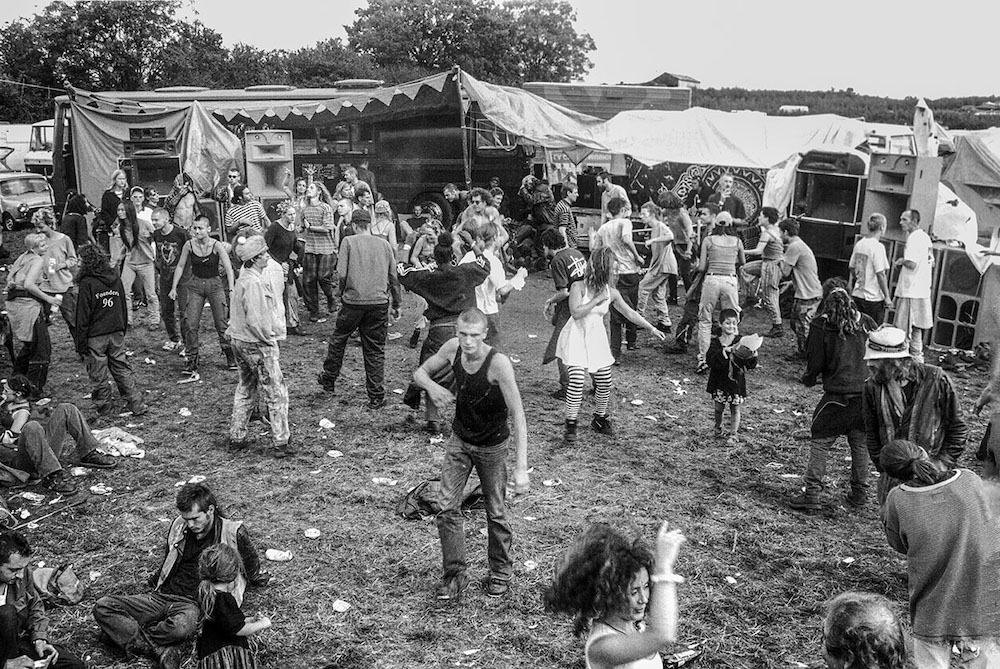
For those who have already picked up a copy of the original, what does the second edition offer that’s different?
Twenty extra pages. Updated writing. I’ve learnt a lot about the history of my times since I made the last one. Image content from five films of negatives that were lost for twenty years…
Could you tell us a bit more about the lost images?
It’s a big story. I gave five rolls of film to a designer friend twenty years ago for a music project called We Control by a chap called Guy Hatfield and Leeroy out of the Prodigy. I totally forgot about them until about 2014 when I realised they were missing. I called the designer, and he couldn’t find them.
I gave up and then at the launch of the Vanguard show in Bristol he rocked up saying he’d just moved house and had found them. They are some of my most confrontational images of conflict during state-sponsored violence at the third Criminal Justice Act demo, the eviction of Wanstonia during the No M11 link campaign and a few more similarly significant events.
On the Kickstarter page, you mention that you’ve learnt about the times you lived through and photographed on more than just a personal level since the first edition was published. What has widened your perspective?
A combination of ongoing personal research into the history of the times I lived through. Evidence from undercover police training manuals, the Mitting Enquiry, folk history from the making of the recent free party film, personal accounts from friends and people adding to my knowledge about the images I made via information gained from their presence on social media. It has also been widened by helping a high-powered criminal defence barrister who just wrote a book about how police strategically co-opt protest.
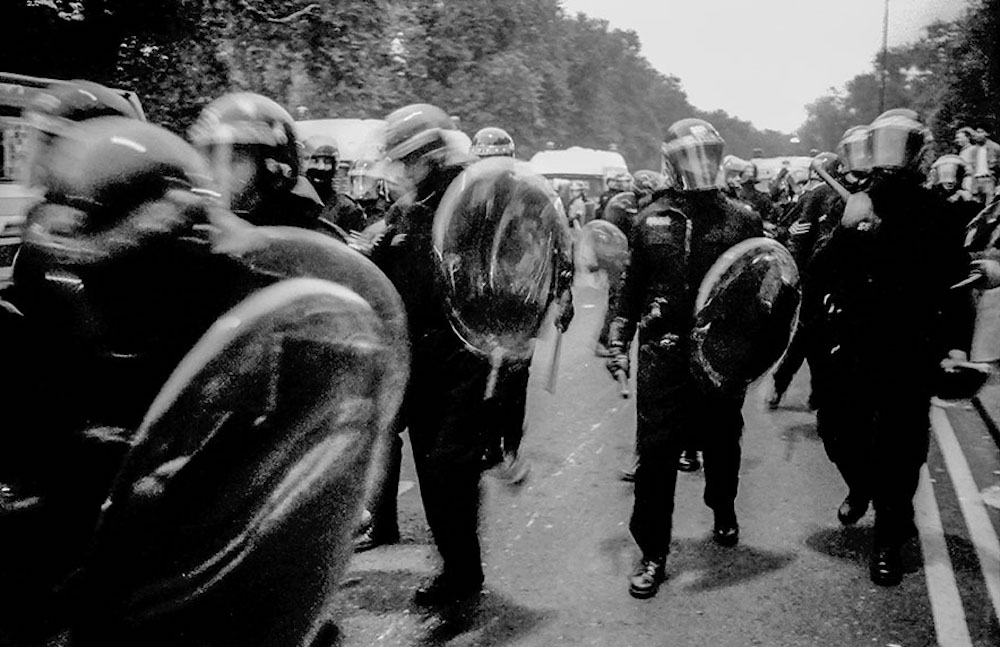
I understand that the concept for the book initially started out as a zine. Now you’re on your way to publishing a second edition! What a journey. Why do you think now is a good time to get the second edition out?
The integrity of our political leadership has been compromised. New laws have been passed and are about to be passed that update the Criminal Justice Act and the subcultures who will suffer from that need help. We were the pioneers of noisy protest back then. I want to weaponise the history of our resistance and make it relatable to everybody now.
Do you think raving and direct action go hand in hand in the same way they did in the ‘90s or have things drastically changed? Of course, here I’m thinking about the Police, Crime and Sentencing Act that was passed earlier this year and its consequential restriction of social freedoms.
There’s more on the way with the new Public Order Bill that is designed to seriously compromise the liberty and financial circumstances of anyone who decides to take part in effective protest.
Back then those Criminal Justice Act protests were pretty revolutionary because it was the first time that mobile sound systems linked protest and celebration in a joyful carnival atmosphere. I loved that we drove through the streets of the capital and got people to dance as they were doing their shopping.
Right now, all the current legislation is about one thing. The government hates publicly visible criticism of its failure. It’s one of the psychotic characteristics of authority in the UK. It’s OK for it to engineer a terrible quality of life for the people who live here, but it’s not OK for those people dissatisfied with government policy to say its shit in public.
That is why the government writes such legislation, to protect itself against people suffering from the failure of its self-interested service. The first duty of government is to maintain its own position of power over and above any supposed representation of the people. If they don’t want people to be unhappy, perhaps they need to examine their own morality and the quality of the service they provide.
The book has catalysed a resurgence of interest in 90s rave culture and politics. It’s a crucial part of social and political history. How important do you think it is that these images and their stories are archived?
It’s an age-old maxim that history is always written by the victor in any given situation but that’s usually more about patriotic PR than the truth. Personally, I think the devil is usually in the details and it’s the little people’s stories that count. That makes for a more democratic history than one rooted in pomp and ceremony.
Personal truth is a whole lot more powerful than state-peddled propaganda, so that’s why I think it’s important. When I first made Exist To Resist, I thought a lot about campfire histories because I learnt a lot from sitting around campfires and listening to stories from other people. Many of those tales were both fascinating and highly educational.
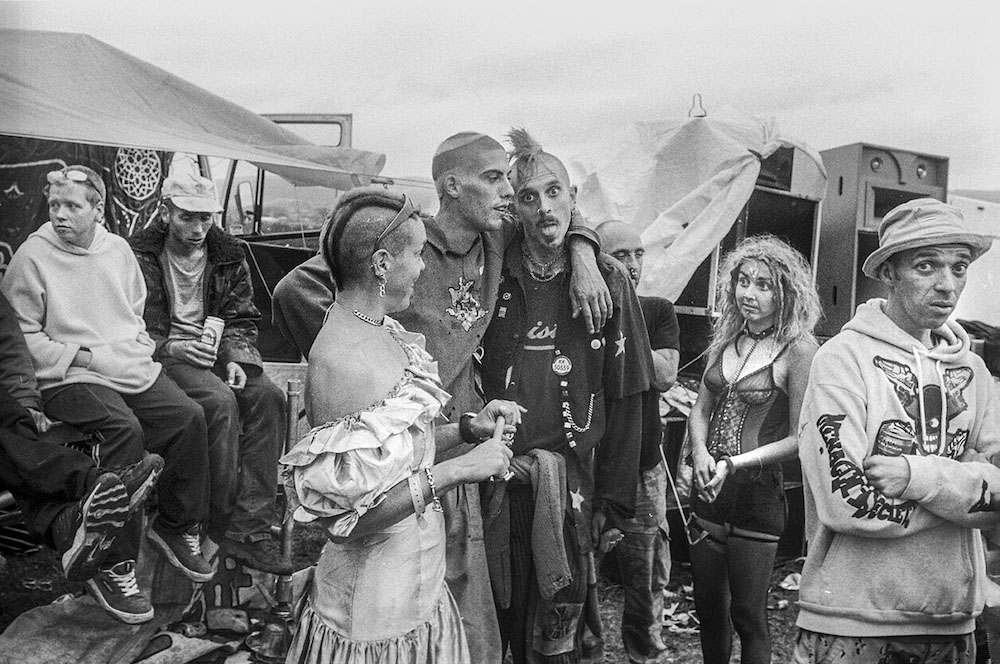
Are there any photos that you are particularly proud of, or have a strong emotional tie to from the book?
I have strong emotional ties to pretty much every image in the book. We were a bunch of friends doing what we did, working together to try and preserve a liberty that we all enjoyed. Making the work and creating projects from it has always been a labour of love. Many of the images are very intimate because that gives them inherent poetry and feeling. I was with one of the loves of my life at the time and she features in some of the work for instance.
Are there any books that have particularly inspired you?
The image makers whose work I love the best are not really artists whose work deals with rave. In the 80s I spent a lot of time in our art college library, and I found the work that still influences me today right there. The first photography books I ever bought were The Lines Of My Hand by Robert Frank, Exiles by Joseph Koudelka and The Nature of Desire by Duane Michaels.
The jazz photographer Herman Leonard should also get a mention, as well as books like Tom Wolfe’s Electric Kool-Aid Acid Test and Jack Kerouac’s On The Road because at the time we were very much on the road.
I had this written on the wall for a time in my studio… “In the US they try to live their so-called Dream…In the UK we just have to deal with the harsh reality.” Frank photographed the Beat Generation. I photographed the Rave Generation. Different country, different drugs, different music, a generation later but with a whole world of cultural similarities.
I also want to add Marvel comics to the list along with Jamie Hewlett’s Deadline and The Sandman by Neil Gaiman. Gaiman is just a master storyteller, the magical realism he brings to his stuff is just awesome. Stardust and The Ocean At The End of The Lane are just fantastic works of fiction blurring with reality. Gaiman is the reason I’ve been working on a feature film narrative for a few years now. If I get my way, one day I’ll get to direct it, and he’ll help with the script.
